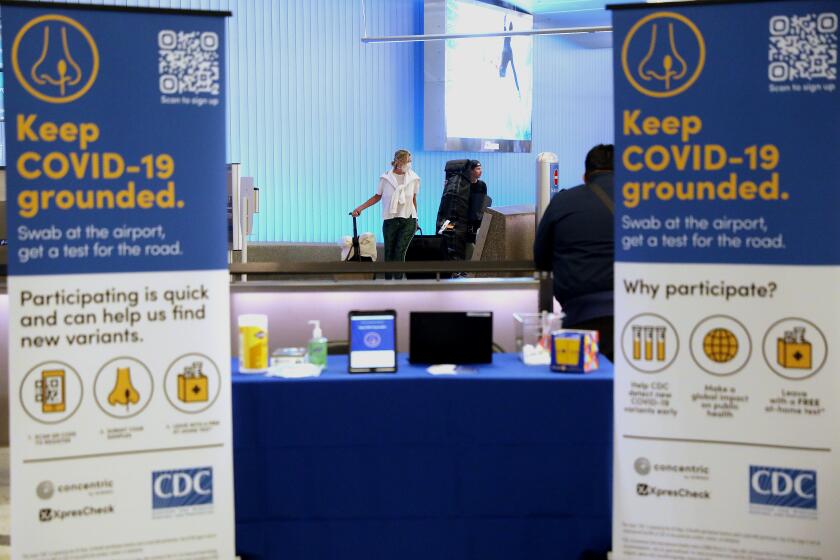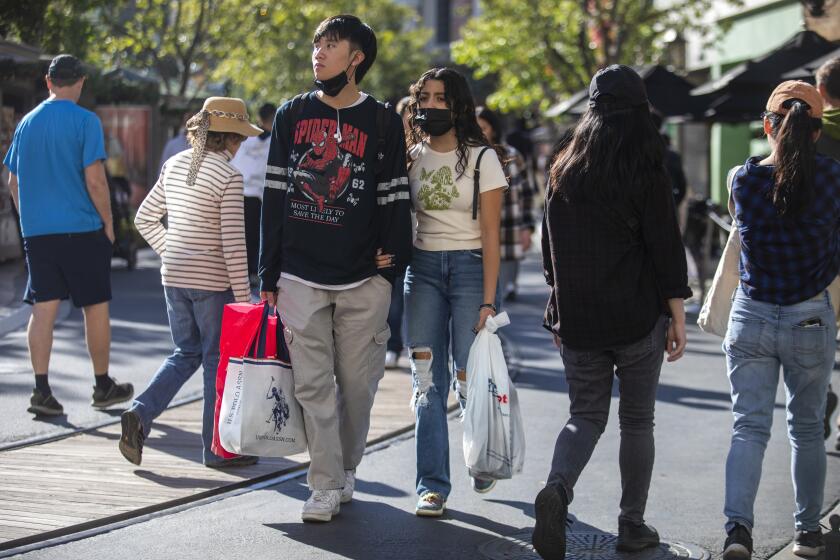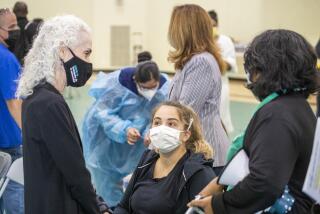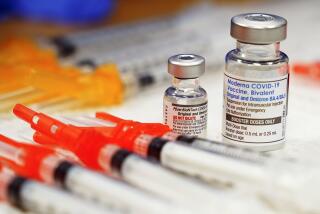California’s COVID-19 student vaccine mandate, on hold since April, is dropped
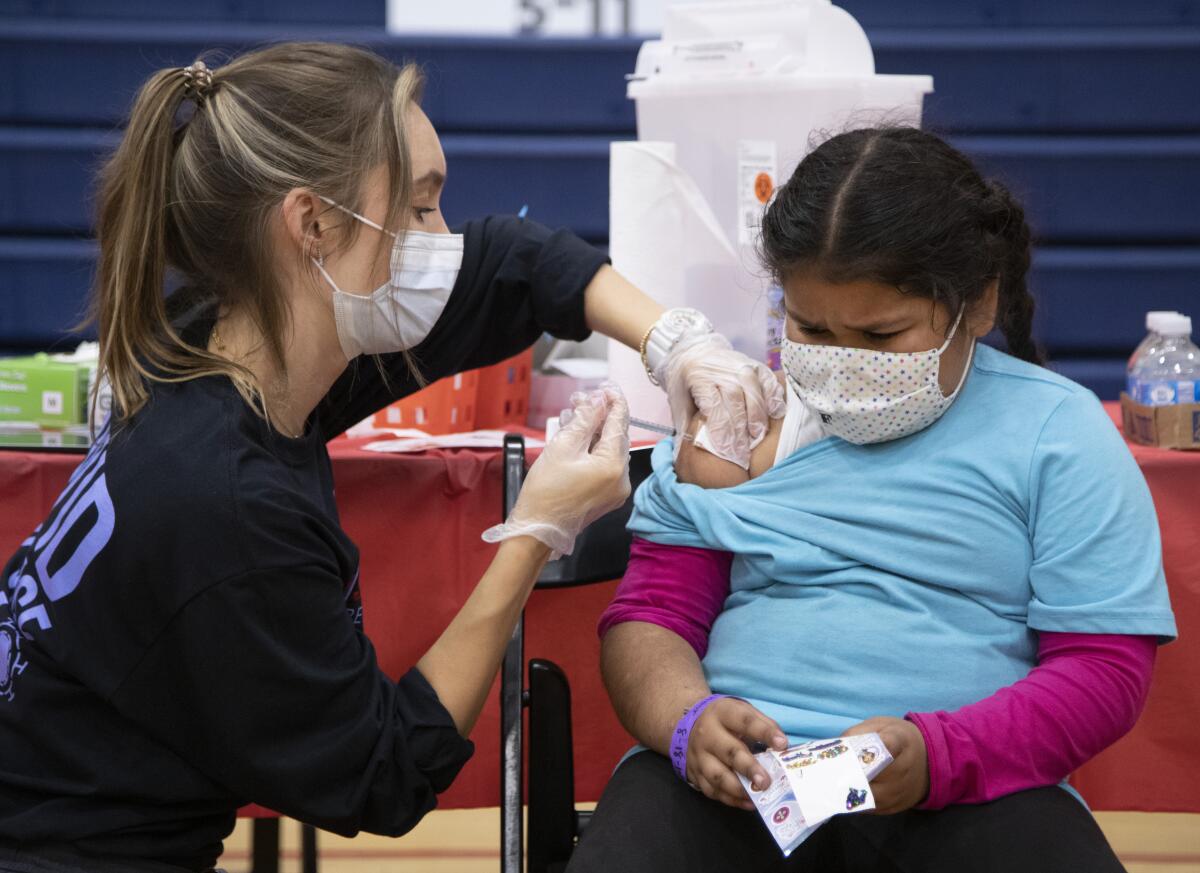
California’s student COVID-19 vaccine mandate — which has been on hold since April — has been quietly dropped as the state prepares to end emergency pandemic restrictions later this month, public health officials confirmed.
Gov. Gavin Newsom announced the policy in October 2021, saying it would eventually apply to all of California’s 6.7 million public and private schoolchildren — a move that put the state at the forefront of pandemic safety measures.
But less than a year later, in April 2022, Newsom paused the mandate, and a bill that would have eliminated an exemption for personal beliefs was withdrawn. At the time, the California Department of Public Health announced that the requirement would be pushed to at least July 1, 2023, because the Food and Drug Administration had not yet fully approved COVID-19 vaccines for children. State officials also said they would need time to approve specific rules, provide instructions to school districts and give them — and parents — time to adjust.
But since then, the crisis caused by the COVID-19 virus in late 2019 has evolved to a less deadly, more manageable and treatable stage. Although COVID-19 remains widespread — and people continue to die from it — the availability of vaccines and antiviral treatments has lessened the effects — offering relief to what had been an overwhelmed public health system.
The dramatic decline in deaths and hospitalizations over time gave Newsom confidence to schedule an end date for the state of emergency on Feb. 28, three years after he made the declaration.
Nearly all of the pandemic restrictions Newsom put in place have been lifted, and, come March, he won’t be able to issue new ones with the same unilateral authority.
Transitioning out of the COVID emergency phase could eventually spell the end of universal access to free vaccines, treatments and tests.
But the vaccine mandate for schoolchildren, a state Public Health Department policy, would not automatically have changed by the lifting of the emergency declaration.
Even so, the same underlying events have played into the decision to end the emergency declaration and the student vaccine mandate. The California Department of Public Health has not said when it terminated its pursuit of a mandatory vaccine.
“CDPH is not currently exploring emergency rulemaking to add COVID-19 vaccinations to the list of required school vaccinations,” the department said in a statement.
Public health officials, in response to a follow-up query, said their statement “simply confirmed what’s been clear for some time: that emergency regulations are not being pursued,” adding that this decision “corresponds with the recent announcement to end the federal public health emergency in the coming months.”
While the acknowledgment of the change in policy has symbolic meaning for many, the practical effect is negligible. State officials have taken no steps toward a mandated vaccine since the effort was postponed about 10 months ago.
Further, if the health department had moved forward, it would have enacted a mandate with a gigantic loophole: a personal-belief exemption. Families could have avoided the vaccine simply by submitting a note. Officials concluded that closing the personal-belief exemption would require an act of the state Legislature — and a bill for that purpose was withdrawn in April 2022.
The governor’s office has not responded to an email requesting a comment and clarification.
L.A. County’s hard-won progress was attributed both to community immunity and tools that have blunted some of the coronavirus’ worst effects.
The end of the mandate is not a repudiation of the vaccine for children.
“COVID-19 immunization is an important tool for keeping our kids healthy and schools open,” the department statement said. “Health officials strongly recommend immunization of students and staff against COVID-19 to prevent hospitalization and other serious complications, including death. Widespread vaccination has contributed to keeping California children in school to learn and to strengthen social connections. Turnkey mobile vaccination services remain available for any K-12 school within the state.”
Parents have been divided over the issue. Some oppose the vaccine under all circumstances; some favor it but dislike the mandate; others wish the mandate had been enforced.
The announcement was welcome news to Jonathan Zachreson, a father of three who lives in Roseville. Zachreson founded the group Reopen California Schools to oppose many of the state’s pandemic policies. His activism led to him being elected to the Roseville City School District board in November.
“This is long overdue. ... A lot of families have been stressed from this decision and worried about it for quite some time,” he said. “I wish CDPH would make a bigger statement publicly or Newsom would make a public statement ... to let families know and school districts know that this is no longer going to be an issue for them.”
U.S. Rep. Kevin Kiley (R-Rocklin), a former member of the state Assembly who challenged Newsom in a failed recall attempt in 2021 over his pandemic policies, published a blog post declaring: “We won. To Gavin Newsom: You lost.”
Kevin Gordon, a lobbyist representing most of the state’s school districts, said he did not think the policy change was the result of political pressure by Republicans but a reflection of slowing coronavirus transmission.
“The public’s appetite for these kinds of mandates is definitely not what it used to be,” he said. It makes no sense “to now impose a heavy mandate when the amount of transmission is significantly lower than it was statewide. A one-size-fits-all solution doesn’t work right now.”
Associated Press reporter Adam Beam and Times staff writer Taryn Luna contributed to this story.
More to Read
Sign up for Essential California
The most important California stories and recommendations in your inbox every morning.
You may occasionally receive promotional content from the Los Angeles Times.
